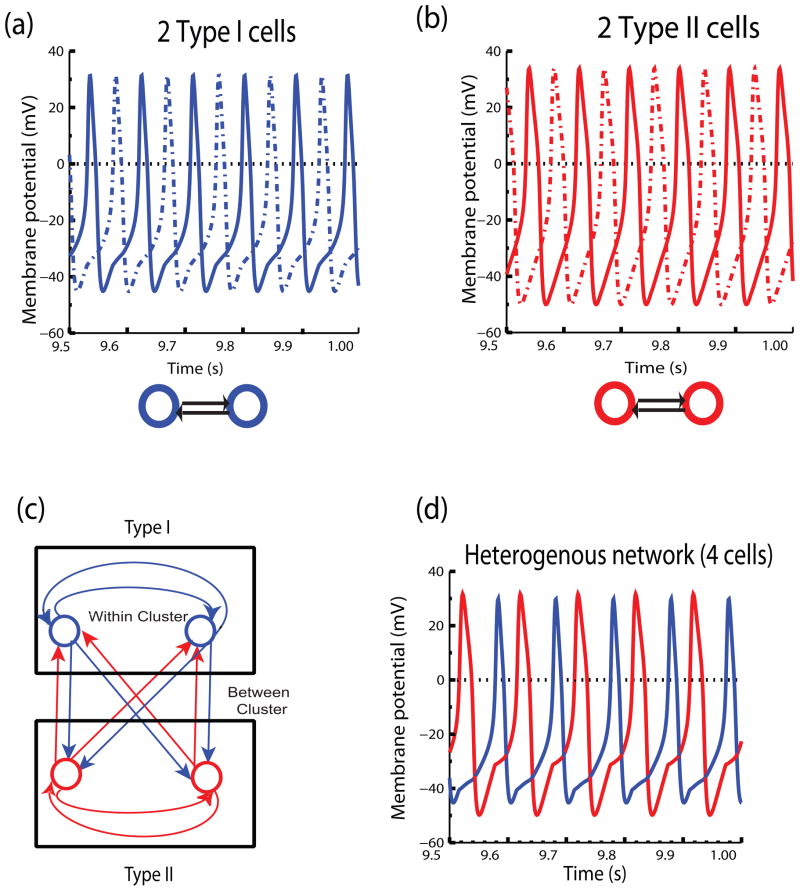Fig. 6.
Two Heterogenous Clusters. (a) Isolated network of Type I excitable neurons coupled with inhibition. Dotted and bold blue voltage traces show that the isolated network does not synchronize, but instead displays an anti-phase mode. (b) Isolated network of Type II excitable neurons coupled with inhibition. Red dotted and dashed voltage traces show that the isolated network does not synchronize, but instead exhibits an anti-phase mode. Synaptic time constant parameter for both (a) and (b) is τsyn = 8 ms and gsyn = .16 mS/cm2. Istim value for (a) is 50.0 μA/cm2 and for (b) is 102 μA/cm2 (c) A heterogenous network of two clusters, one of Type I excitability and the other belonging to Type II excitable class where the coupling is all to all, identical and inhibitory. (d) When the two clusters are reciprocally coupled to each other as shown in (c) they give rise to a stable two cluster solution as shown by the red and blue voltage traces with exact synchrony within the clusters.

